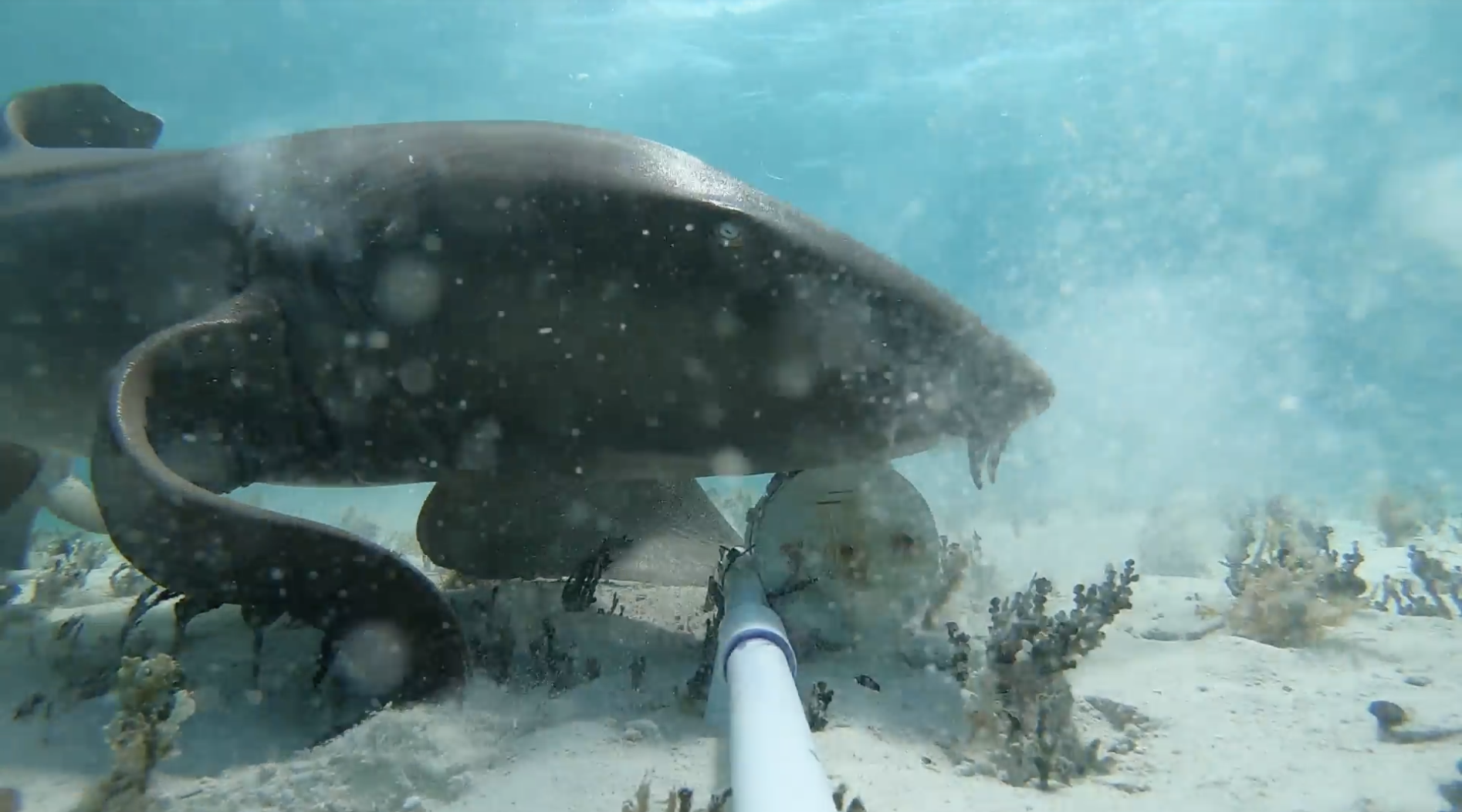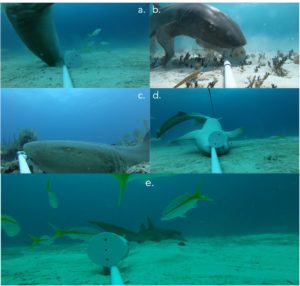
Rare “Walking” Feeding Behavior Recorded in Nurse Sharks
Since the first modern sharks appeared roughly 100 million years ago, these animals have had plenty of time to get creative in mastering the art of hunting. Protruding jaws, stunning prey, filter feeding, and even breaching out of the water have all been observed methods of feeding. Now, a rare feeding behavior has been recorded in nurse sharks for the first time, and it resembles walking.
Through collaboration with scientists from The University of Exeter, we documented the first video evidence of a feeding behavior called pectoral positioning in nurse sharks. During this behavior, the shark bends or arches one or both pectoral fins, touches the tops of the fins to the seafloor, and then pushes off of the seabed to maneuver into a more favorable position to suction out food. Pectoral positioning has previously only been seen in three families of elasmobranchs (sharks, skates and rays) that include bamboo sharks, sleeper rays, and smooth skates, making this a notable discovery.
Nurse sharks are a generalist species that can thrive in a range of habitats and feed on a variety of species. They often inhabit coral reefs and feed on prey such as crustaceans or sea urchins that may hide within crevices in the reef. The need to move into these tight spaces to suction out food leads scientists to believe that unique changes in skeletal and muscular structures around the pelvis and pectoral fins allow nurse sharks to be more flexible.
The pectoral fins in particular are able to function much like a human foot contacting the ground through the presence of a protein called Type II collagen. This protein makes the fins more elastic and allows them to move forwards and backward.
So How Did We Do It?
For about a year in the coastal waters of the Turks and Caicos Islands, our team of researchers deployed 78 baited remote underwater videos (BRUVs) on shallow banks and reefs that would contribute to our ongoing projects. Opportunistically, we began analyzing the understudied topic of nurse shark feeding behavior. From those 78 BRUVs, we made 233 observations of nurse sharks and identified five different feeding behaviors, including pectoral positioning.
The first was vertical feeding. Here, the sharks would position their body vertically with their head facing down over the bait cage on the BRUV. During this behavior, the sharks would slightly move their caudal fin to keep balance while feeding.
We also observed a behavior called stationary horizontal feeding, where sharks would remain motionless on the seafloor with their head close to the bait cage on the BRUV to slowly suction
out food. Seemingly disinterested sharks would conduct a swimming pass, where they would not interact with the BRUV and only remained in the frame for several seconds.
The fourth behavior was ventral feeding, where the nurse sharks rotated 180 ° onto their back with the head positioned underneath the bait cage to suction food.

Observed feeding behaviors. (a) Vertical Feed, (b) Pectoral Positioning, (c) Stationary Horizontal Feed, (d) Ventral Feed, (e) Swim Pass
Why Does it Matter?
In the past, studies on nurse shark behavior have focused heavily on reproduction. With feeding behavior being an understudied topic, we are left with a poor understanding of how nutrients can flow through the ecosystems in that nurse sharks interact. These feeding behaviors can also be altered through human impacts and changes to the environment. In this study, we found that stationary horizontal feeding was three times more common in bank habitats when compared to reefs, and that swim passes occurred at shallower depths. From these results, we can begin to understand how habitat changes might change feeding behaviors and contribute to the distribution of this species.
Read the full study, “Opportunistic camera surveys provide insight into discrete foraging behaviours in nurse sharks (Ginglymostoma cirratum),” recently published in the journal Environmental Biology of Fishes.
Edited by Alex Butler.










